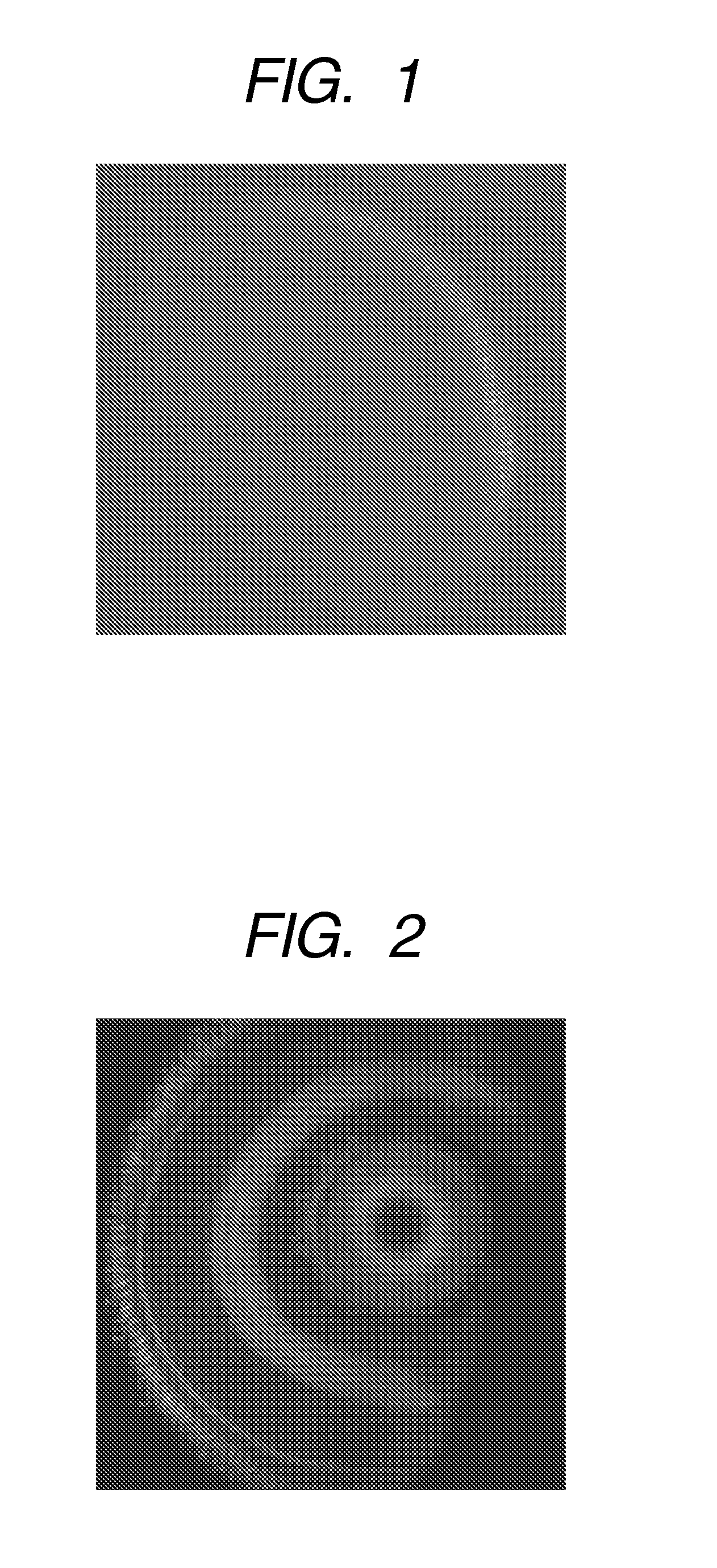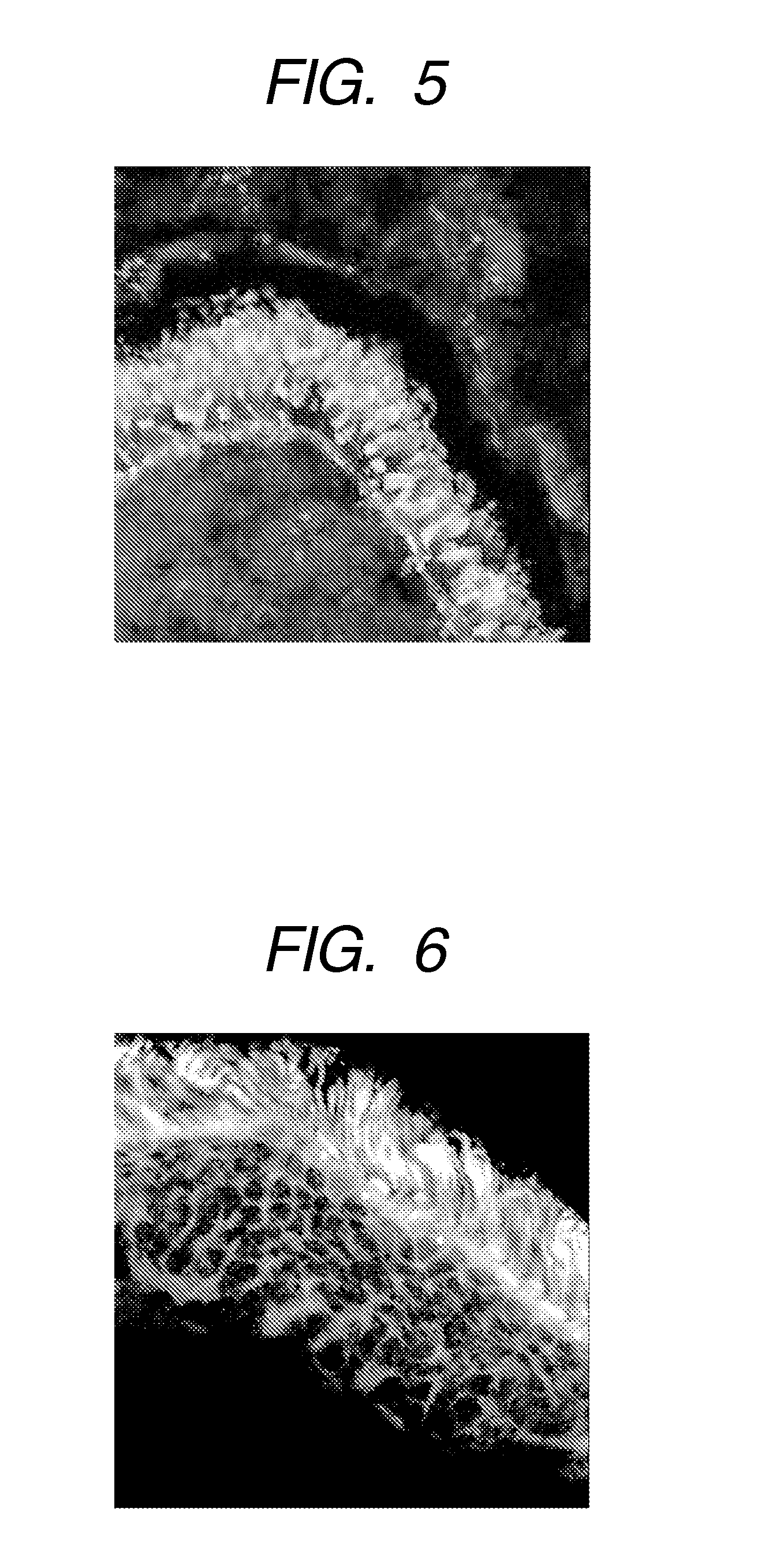Labeling composition for intraocular tissue, labeling method of intraocular tissue, and screening method
a technology of labeling composition and intraocular tissue, which is applied in the direction of anthracene dyes, biological material analysis, medical preparations, etc., can solve the problems of inability to visualize the morphology of cells forming the retina, low resolution of current oct image, and marked impairment of patient quality of life, etc., to achieve high precision, simple and easy way, and high definition
- Summary
- Abstract
- Description
- Claims
- Application Information
AI Technical Summary
Benefits of technology
Problems solved by technology
Method used
Image
Examples
example 1
[0300]Distilled water was added to a 1 mg / mL DMSO solution of Staining compound 1 to obtain Staining Liquid 1 containing Staining compound 1 at a concentration of 1 μg / mL. In an arbitrary well of a 24-well multiplate (product of IWAKI), were put 1 mL of Staining Liquid 1 and a fry of Zebrafish 7-day-old embryo (7 dpf), and the plate was left to stand for 1 hour. A process of removing Staining Liquid 1 in the well and replacing it by 1 mL of distilled water was then performed 3 times. Further, 1 mL of a phosphate buffer solution containing 4% paraformaldehyde was added, and the plate was left to stand for 1 hour. The fry was then taken out of the well and embedded in a 5% low-temperature fused agarose gel to prepare a section of an ocular tissue using Linear Slicer PRO 7 (manufactured by Dosaka EM Co., Ltd.). The thus-prepared ocular tissue section was placed on a slide glass to observe the ocular tissue through a confocal microscope (Pascal Exciter, manufactured by Zeiss Co.).
examples 2 to 106
[0301]Sections were prepared by the same process as in Example 1 except that Staining compound 1 in Example 1 was changed to staining compound s described in Table 1, and observed.
example 107
[0306]Distilled water was added to a 1 mg / mL DMSO solution of Staining compound 5 so as to give a concentration of 1 μg / mL to obtain Staining Liquid 2. In an arbitrary well of a 24-well multiplate, were put 1 mL of Staining Liquid 2 and a fry of Zebrafish, and the plate was left to stand for 1 hour. A process of removing Staining Liquid 2 in the well and replacing it by 1 mL of distilled water was then performed 3 times.
[0307]The fry was then put in a 0.7% agarose solution and placed on a slide glass to observe the fundus of the fry through a confocal microscope.
PUM
| Property | Measurement | Unit |
|---|---|---|
| concentration | aaaaa | aaaaa |
| concentration | aaaaa | aaaaa |
| temperature | aaaaa | aaaaa |
Abstract
Description
Claims
Application Information
 Login to View More
Login to View More - R&D
- Intellectual Property
- Life Sciences
- Materials
- Tech Scout
- Unparalleled Data Quality
- Higher Quality Content
- 60% Fewer Hallucinations
Browse by: Latest US Patents, China's latest patents, Technical Efficacy Thesaurus, Application Domain, Technology Topic, Popular Technical Reports.
© 2025 PatSnap. All rights reserved.Legal|Privacy policy|Modern Slavery Act Transparency Statement|Sitemap|About US| Contact US: help@patsnap.com



